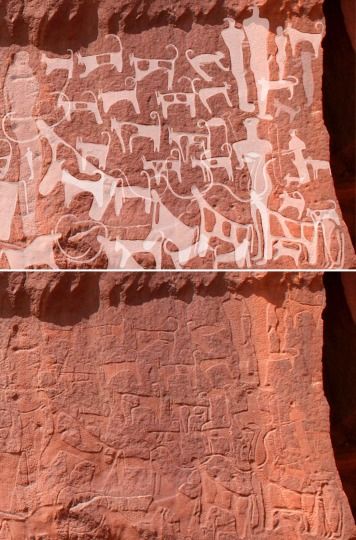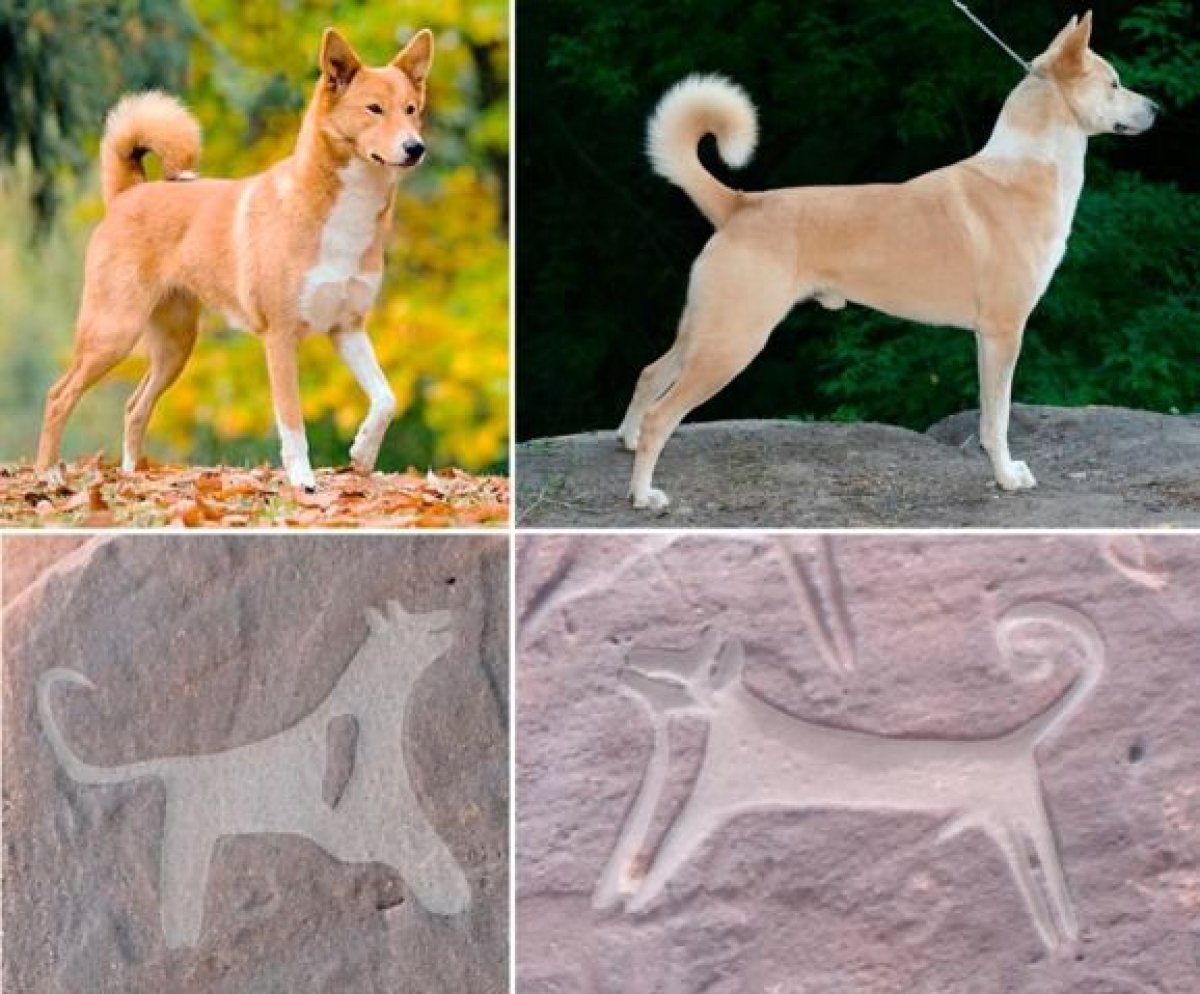
Rock art discovered on the Arabian Peninsula depicts scenes of hunting dogs that were not just domesticated, but being walked on leashes. Some of the hunting scenes are now the region's oldest known evidence of dogs, with or without leashes.
We already knew that pre-Neolithic humans used domesticated dogs for hunting purposes, but details about how exactly they went about this have remained unclear. The 147 hunting scenes the researchers have been studiously documenting at sites in Shuwaymis and Jubbah, in northwestern Saudi Arabia, show a range of possible roles. A paper detailing the research was published in the Journal of Anthropological Archaeology.
"When [corresponding author Maria Guagnin] came to me with the rock art photos and asked me if they meant anything, I about lost my mind," co-author Angela Perri, who studies animal archaeology at the Max Planck Institute for Evolutionary Anthropology in Leipzig, Germany, told Science Magazine. "A million bones won't tell me what these images are telling me," she says. "It's the closest thing you're going to get to a YouTube video."
The scenes showed that domesticated dogs were used to hunt a variety of game including gazelle, ibex, and even wild Arabian horses. They also seem to have been used in breeding populations.

"It's truly astounding stuff," Melinda Zeder, an archaeozoologist at the Smithsonian Institution National Museum of Natural History in Washington, D.C., told Science. "It's the only real demonstration we have of humans using early dogs to hunt."
Zeder's work was referenced by the authors of the new paper. The dogs themselves are reminiscent of the Canaan dog, a popular modern breed: medium-sized and with uniformly short square snouts, pricked ears, and curlique tails. They also share the same coat patterning. The researchers concluded that the Canaan breed could have evolved from the Arabian dogs, but that they also could have evolved similarly due to their close proximity—essentially resembling each other because they were adapting to the same living conditions.
Before these findings were published, archaeologists believed the oldest-known images of dogs were on Iranian pottery no older than 8,000 years old. These new images are dated to between 8,000 and 9,000 years ago. The next-oldest known evidence of leashes, meanwhile, isn't even close; a 5,500-year-old wall painting in Egypt. The new research should help piece together the chronology of how exactly domesticated dogs were trained to hunt in this region.
"[T]he archaeological record in this region is really spotty," Zeder told Science.
Uncommon Knowledge
Newsweek is committed to challenging conventional wisdom and finding connections in the search for common ground.
Newsweek is committed to challenging conventional wisdom and finding connections in the search for common ground.
About the writer
Kastalia Medrano is a Manhattan-based journalist whose writing has appeared at outlets like Pacific Standard, VICE, National Geographic, the Paris Review Daily, ... Read more
To read how Newsweek uses AI as a newsroom tool, Click here.








